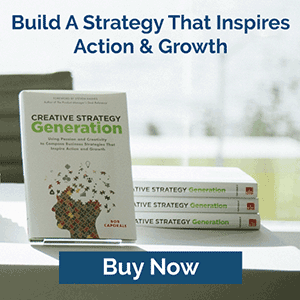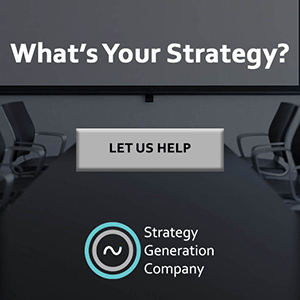Dear Strategy:
“How do you communicate strategy to the rest of the organization with a small and newly formed team on a previously languishing product?”
There are a few key sentiments in this question that I’d like to bring to the forefront before giving my answer. The first is that this is a new team, the second is that this is a small team, and the third is that this is a product that wasn’t doing so well. Given this picture, I am going to infer that we’re dealing with a bit of a hot potato here – meaning that perhaps this is a newer product that didn’t do so well upon launch, and that a newly formed team has now been tasked with trying to fix the problem.
The reason these assumptions are important is that it’s a lot easier to motivate people around a winning product than a losing one. Referring to the terms used in the famed BCG Growth-Share Matrix, everyone wants to be associated with a “star” product (high market share, high market growth, and usually profit and revenue that follow accordingly), but nobody wants to be associated with a “dog” product (low market share, low market growth, with typically low revenue and low profit to go along with it). So, if this is a newer team that has been formed to fix a “previously languishing product,” from a motivational standpoint, they’re probably starting out at the bottom of a pretty steep cliff.
So, with that out of the way, let’s talk about how this team might be able to push through some of these barriers and communicate their strategy in a way that will get people to stand up and take notice.
Set Realistic Expectations
We all want products to be raging successes in the marketplace. But, unfortunately, simply wishing something to be so rarely equates to it actually being so.
Some products are at the end of their useful lives, others aren’t adequately differentiated in the marketplace, and still others don’t address customer needs in any sort of a meaningful way. That’s not to say that some of these dynamics can’t be fixed; in fact, that’s what having a strategy is all about. But if your overarching goal of fixing something isn’t backed up by a solid, achievable, and believable plan of some type, you can expect that your message will effectively fall upon deaf ears.
In the end, your stakeholders will see through goals that have no real hope of being accomplished. I’ll be covering this topic in more depth and with specific examples in a future post. But, for now, suffice it to say that you need to have a strategy that matches your goals, and you need to have goals that match your strategy.
“In the end, your stakeholders will see through goals that have no real hope of being accomplished.“
So, if your product was languishing and you have a realistic and achievable plan to help fix it, then you’ve already passed the first hurdle on the path to communicating your strategy in an effective way.
Focus Your Strategy on Your Audience
Assuming you have the first part licked, the next thing you have to do is communicate your plan with your audience’s needs in mind. In other words, you have to make sure your audience understands exactly how your plan is going to benefit them.
In terms of business, these benefits can take many forms, but common examples might include things like job or career opportunities, department or functional advancements, or even overall company performance benefits that will eventually translate into individual successes. So, if your strategy is, in some way, going to help your company to grow, make sure you break that down into how each department, function, and even individual in your company is ultimately going to benefit from that result. Taking this approach will turn your communication from something you want people to care about to something they really do care about, and will ensure that you have their full attention in the process.
Tell an Engaging Story
Of course, even after setting realistic expectations and communicating real benefits to your audience, you still need to keep in mind the importance of telling your story in a way that will keep people engaged and interested. Since I’ve covered that aspect of communication in several other posts, I’ll leave you with a few links that can help you execute this final piece of the puzzle:
So, there you have it. If you want to communicate your strategy effectively for a previously languishing product, be realistic, make it about your audience, and tell an engaging story. If you follow these three simple tips, you should be able to rally almost anyone around almost anything – provided, of course, that you’ve already rallied yourself around it too.
But that’s a topic for a different day…
Listen to the podcast episode
Dear Strategy: Episode 075

###
Are you interested in strategy workshops for your product, marketing, or business managers? If so, please be sure to visit Strategy Generation Company by clicking the link below:
 Bob Caporale is the founder of Strategy Generation Company, the author of Creative Strategy Generation and the host of the Dear Strategy podcast. You can learn more about his work by visiting bobcaporale.com.
Bob Caporale is the founder of Strategy Generation Company, the author of Creative Strategy Generation and the host of the Dear Strategy podcast. You can learn more about his work by visiting bobcaporale.com.







